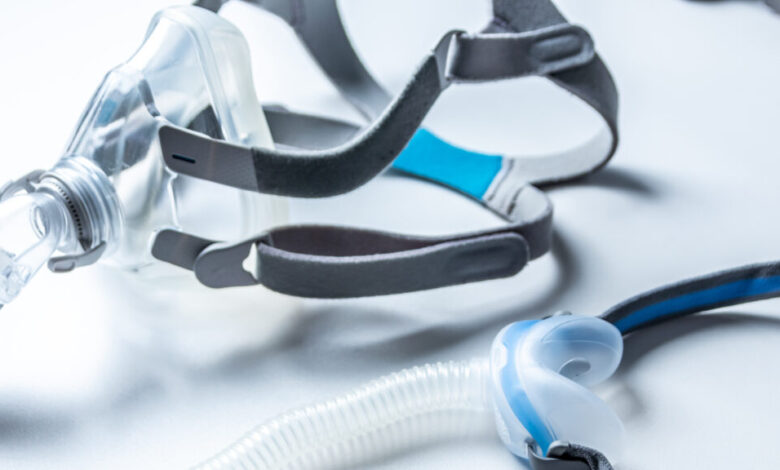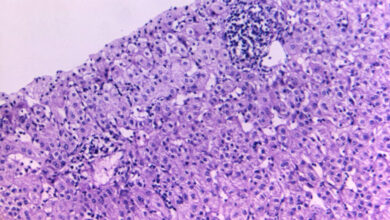How AI can fail people with disabilties, and what can be done

For people with disabilities who may have difficulty getting to a doctor’s office or hospital, in-home monitoring systems can provide a convenient way to track their health and receive necessary care. These systems can also offer peace of mind to individuals and their families, knowing that help is just a call away if needed.
Aboulafia: In-home monitoring systems can also empower people with disabilities to take control of their own health and well-being. By having access to real-time data and alerts, individuals can make informed decisions about their care and potentially prevent health crises before they occur. These systems can be a valuable tool in promoting independence and autonomy for people with disabilities.
What are some key recommendations from the report for improving the use of AI and algorithmic systems in health care for people with disabilities?
Aboulafia: One key recommendation is to prioritize the inclusion of people with disabilities in the development and testing of AI technologies. By involving individuals with lived experience in the design process, developers can ensure that these systems are accessible, accurate, and effective for all users. Additionally, there needs to be greater transparency and accountability in how these technologies are developed and deployed, with a focus on addressing potential biases and discrimination.
Claypool: Another important recommendation is to conduct regular audits and evaluations of AI systems to ensure that they are meeting the needs of people with disabilities. This includes testing the accuracy and effectiveness of these systems in diverse populations and settings, as well as identifying and addressing any potential sources of bias or discrimination. By taking a proactive approach to monitoring and improving AI technologies, we can help ensure that all individuals receive high-quality, equitable care.
In conclusion, what do you hope will be the impact of this report on the future of health care for people with disabilities?
Aboulafia: Our ultimate goal is to spark a conversation and drive action towards creating a more inclusive and equitable health care system for people with disabilities. By shedding light on the challenges and opportunities presented by AI technologies, we hope to inspire meaningful change in how these systems are developed, implemented, and regulated. We believe that by working together, we can build a future where all individuals, regardless of ability, have access to the care and support they need to thrive. In today’s world, technology plays a crucial role in monitoring and managing health status, especially for individuals with disabilities who may face transportation challenges. These individuals rely on tools like smart home surveillance systems, wearable technologies, and CPAP machines to keep a close watch on their health conditions. For example, those with diabetes can use technology to track their blood sugar levels, while CPAP machines help monitor sleep events to ensure proper breathing patterns.
However, along with the benefits, there are also drawbacks to using these monitoring technologies. One major concern is the reliance on internet and electricity, which can pose a problem if there is an outage. Additionally, there are privacy issues related to surveillance systems that may capture and analyze footage in the home. To address these concerns, it is recommended that individuals with disabilities choose technologies from trusted providers rather than third parties.
Moreover, the use of artificial intelligence (AI) in healthcare raises questions about accuracy and reliability. AI systems may make errors or “hallucinate” data, which could impact individuals with disabilities who rely on these technologies for monitoring their health. It is important for healthcare providers to conduct audits of AI systems to ensure accuracy and prevent potential biases in the data.
When it comes to implementing technology in healthcare, it is essential to consider the impact on individuals with disabilities. Technology should not be used as a replacement for in-person care but rather as a supplement to traditional healthcare services. Additionally, budget cuts in healthcare systems can lead to reduced hours of care for individuals who rely on long-term services and supports, further underscoring the importance of using technology responsibly.
Overall, while there are challenges and risks associated with using monitoring technologies in healthcare, there is also great potential for improving outcomes for individuals with disabilities. By working closely with technology developers and following best practices, we can ensure that these individuals receive the care and support they need while safeguarding their privacy and well-being in the healthcare system. The field of artificial intelligence (AI) is rapidly expanding and evolving, with new breakthroughs and advancements being made every day. One of the most exciting areas of AI research is in the development of neural networks, which are computer systems that are designed to mimic the way the human brain works.
Neural networks are made up of interconnected nodes, or neurons, that are arranged in layers. Each neuron takes input from the neurons in the previous layer, processes that information, and then passes the output along to the neurons in the next layer. This process is repeated through multiple layers, with each layer performing increasingly complex computations.
One of the key advantages of neural networks is their ability to learn from data. By training a neural network on a large dataset, it can learn to recognize patterns and make predictions based on that data. This is known as machine learning, and it has a wide range of applications in fields such as image and speech recognition, natural language processing, and even autonomous driving.
One of the most common types of neural networks is the deep learning network, which is a type of neural network that has multiple hidden layers between the input and output layers. These hidden layers allow the network to learn more complex patterns and relationships in the data, making it more powerful and accurate.
Deep learning networks have been used to achieve impressive results in a variety of tasks. For example, deep learning networks have been used to develop systems that can accurately detect and classify objects in images, transcribe speech into text, and even generate realistic images and videos.
One of the challenges of deep learning networks is that they require a large amount of data to train effectively. This can be a limiting factor in some applications, especially in domains where data is scarce or expensive to collect. Researchers are constantly working on developing new techniques to make deep learning networks more efficient and effective, such as transfer learning, which involves transferring knowledge from one task to another.
Despite these challenges, the potential of neural networks and deep learning is immense. They have the power to revolutionize industries such as healthcare, finance, and transportation, and are already making a significant impact in areas such as autonomous vehicles, personalized medicine, and fraud detection.
As researchers continue to make advancements in the field of neural networks, we can expect to see even more exciting applications and breakthroughs in the near future. The possibilities are endless, and the future of AI looks brighter than ever.




